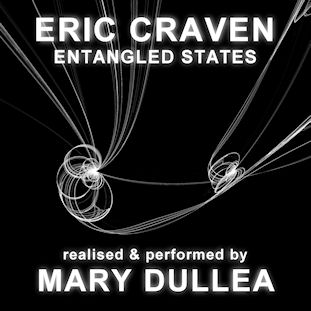Fanfare
This set of brief pieces—like the three Craven sonatas reviewed by Peter Burwasser, Carson Cooman, and Maria Nockin in Fanfare 38:3—employ “non-prescriptive” notation that gives the per¬former a great deal of latitude. Just how much latitude is itself variable: The degree of indeterminacy ranges from “low-order” writing (where, as Scott McLaughlin tells us in his excellent notes, the score lacks “articulation, dynamics, colours, phrasing, etc.”) through “middle-order” composition (which, among other things, gives the performer control of the ordering of musical events) on to “high-order” music (where the paper consists of nothing but pitches, shorn even of rhythm.) The high-order writing, in fact, offers the performer so much choice as to become, in McLaughlin’« words, “a co-composer …. allowing the pieces to be shaped differently by each performer according to their own histories and experiences.” To make matters more dizzying still, the sequence of the pieces is not fixed (listeners of the CD are encouraged to “construct their own ordering”)—and a given piece in this set may well be a hybrid of two types of indeterminacy. Need another turn of the screw? On this recording, although there are 48 numbered pieces, there are actually only 36 different scores, since a dozen of them are offered in two realizations.
Stylistically, the music—at least, the music that emerges in Mary Dullea’s loving realizations—varies dramatically, sometimes vaguely echoing Prokofiev, at others taking on a Satie-like coolness, at times sounding like an out-take from Bartok’s Mikrokosmos, at others darting over the keyboard like some anonymous post-Webernist. Despite the variety, though, and despite the presence of a number of vital and delightful pieces (especially among those where the jazz influence is most evident), I found the music’s short-windedness—and its occasional readiness to overuse particular gestures (especially rhythmic) within a piece—ultimately wearing. Would it be more gripping if we had the scores in front of us, so we could link the sounds to the concepts behind them? Perhaps; but as a purely aural experience, the nearly two-hour expanse seemed, as Burwasser suggested, self-indu¬gent. Still, that is far from a universal reaction: Cooman found the sonatas “an engaging listening experience that repays revisiting,” while Nockin found them “fascinating.” So if the underlying concept appeals to you, you might well want to give Entangled States a try. Certainly, there can be no complaints about the performances or the sound.
@divineartrecordingsgroup
A First Inversion Company
Registered Office:
176-178 Pontefract Road, Cudworth, Barnsley S72 8BE
+44 1226 596703
Fort Worth, TX 76110
+1.682.233.4978












